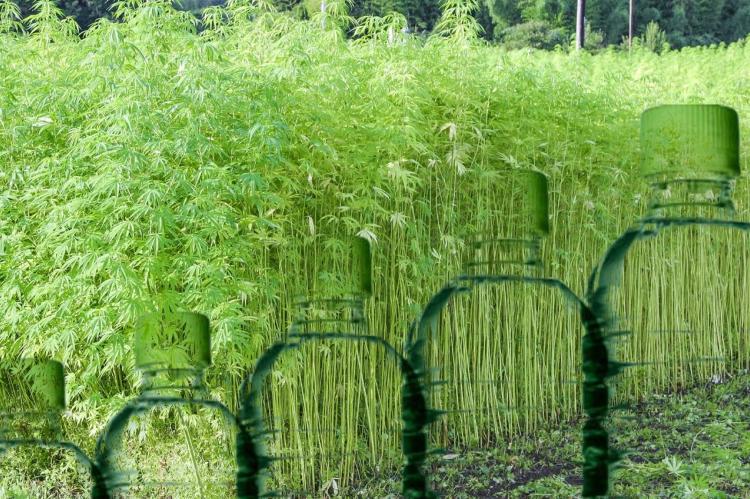Hemp Plastics: A Look at the Pros and Cons
Hemp plastics will be an improvement, but are there drawbacks?
For years, the human race has followed a non-sustainable pattern of development, and now, we face the repercussions. Accumulation of greenhouse gases – one of the many effects of man’s activities – has given rise to a large number of grave events: global warming, biodiversity loss, environmental pollution, and many more.
As stated by Greenpeace, man’s over-reliance on single-use plastics has ranked them as a top environmental pollutant. With over 200 kilos of plastic been dumped into the sea every second, there is a recorded average mortality rate of about 1 million seabirds and 100,000 marine mammals annually.
Given the rising rate of global pollution, several organizations have sprung up to address and work towards curbing this ecological threat via the discovery of more sustainable alternatives.
HEMP PLASTICS
These are bio-plastics made from non-toxic, biodegradable hemp fibers. Commercially produced as composite plastics or pure-hemp fiber plastics, they generally have a tensile strength higher than polypropylene.
In 1941 after twelve years of research, Henry Ford created the first almost-100% hemp-car, which also possessed the potential of running off hemp fuel and vegetable oil. Given the unique properties of hemp, it is no surprise that during the show-off, when Ford hacked the car with an ax, the ax left no dent – proving the strength of the car’s hemp-body.
Fun tip: The only steel part of the car was the tubular welded frame.
HEMP PLASTICS IN INJECTION PLASTIC MOLDING
This is the high-pressure infusion of molten raw materials by a ram or screw-type plunger into a mold, where it cools and solidifies to the desired shape. The mold used could be a single-cavity or multiple cavities, depending on the target end-product.
With the industrial production of hemp bio-plastics seeming to be the next big thing, non-sustainable forms are left for their better alternative. Current research into this field has given rise to fire-retardant products in the UL94, V-0, V-1, and V-2 grades. Furthermore, hemp plastics are easily modifiable to suit plastic injection molding.
TYPES OF HEMP BIO-PLASTICS
Currently, there are several types of hemp plastics, from the standard plastics reinforced with hemp fibers to 100% hemp plastic materials. Listed below are a few of this bio-plastic categories:
- Hemp cellulose.
- Cellophane, rayon and celluloid.
- Cellulose nano-crystals.
- Nano-cellulose.
- Composite hemp plastics.
THE UNIQUENESS OF HEMP PLASTICS
- Mass:
The benefits of lightweight structures cannot be over-emphasized. Their high mobility, low energy expenditure, and fast speed give them their supremacy. However, the high cost of raw materials used in their production is a prime deterrent.
The emergence of inexpensive hemp fibers with their relatively favorable density to weight ratio has gotten several industries, especially the automobile corporations taking advantage of its capacities. In 2017, Bruce Dietzen - a former Dell executive, having been inspired by Henry Ford’s hemp car, built a sports convertible from just about 100 pounds of cannabis hemp.
- Recyclable and Biodegradable:
In line with the current trend of sustainability, industries are making the switch to more sustainable, health-safe raw materials for production. Hemp’s potential to grow prolifically, with a short decomposition period, and easy recyclability, makes it an excellent raw industrial material.
- Durability:
Despite its fast decomposition, hemp plastics are five times stiffer and 3.5 times more durable than the traditional plastics. They are also stronger than the regular steel, resistant to wear-and-tear, and highly flexible.
- Eco-friendly:
During respiration - as with all photosynthetic plants in, hemp absorbs carbon dioxide from the atmosphere, converts it to oxygen, and releases it, thereby reducing greenhouse gases and minimizing global warming.
When used in bio-materials manufacture, this CO2 remains in the products and is not expelled, if utilized, and appropriately discarded.
- Economic:
According to the Hemp Industries Associations in 2012, the U.S Hemp industry was worth about $500 million in annual retail sales and hemp cultivation. Economic analyses have seen a two-digit growth in the European Union, due to the 500,000 tons of bioplastic manufactured in a year.
Concerning the market price, there is a vast difference between hemp plastics and traditional plastics because of the unavailability of bio-plastic processing machinery. Despite this, several other companies like Lego are promising to progress from the use of fossil-based resin to hemp plastics by 2030.
DEMERITS OF HEMP PLASTICS PRODUCTION
• Agricultural imbalance:
Development of the hemp plastic industry might cause a resultant shift in the purpose of agricultural cultivation from food crops production to raw material provision for these bioplastics. This remains under skepticism giving that, most food shortages are due to economic mismanagement and poor distribution.
• Recycling facilities:
The biodegradable quality of bioplastics is highly dependent on raw materials used and favorable environmental conditions. In the absence of these factors, the bioplastics remain longer than expected in the environment, thereby becoming a pollutant.
Hence, these bioplastics still require facilities and infrastructures to enable their recycling when necessary.
Point to note: In the drive against environmental pollution, the use of bioplastics is only one step of many. To make a significant positive impact on the environment, the cavalier mindset of humanity to nature has to change.
CHALLENGE FACED
Although hemp plastics are beginning to make waves, the legislation against cannabis cultivation in most parts of the world remains a hindrance to its progress. It is uncertain how far the use of hemp plastics will go globally, but regardless of the uncertainty, this is certain – hemp plastics will revolutionize the world.
- Log in to post comments

